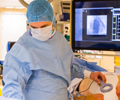Pacing practice has moved on from the start with unipolar pacing and now practice includes implantable defibrillators and cardiac resynchronisation therapy (CRT) for the treatment of heart failure, with parallel developments in remote follow up. Direct His Bundle pacing is now feasible using specially designed guide catheters and a standard pacing lead and appears to have significant benefits with reductions in heart failure hospitalisation, atrial fibrillation and mortality.
The supplement also looks at progress in pacemaker and defibrillator lead extraction, as well as the fast evolving field of leadless pacing. We are pleased to provide ‘state of the art’ review in this exciting field.
We hope that you will find the supplement interesting and of value in your everyday practice.
Paul Foley
Guest Editor
Articles in this supplement:
Current and future perspectives on cardiac pacing
A brief history of cardiac pacing in the UK
Cardiac resynchronisation therapy – developments in heart failure management
Drugs with devices in the management of heart failure
His-bundle pacing: UK experience and HOPE for the future!
Leadless pacing
Techniques in pacemaker and defibrillator lead extraction
Remote monitoring
Remote follow-up of ICS: a physiologist’s experience

